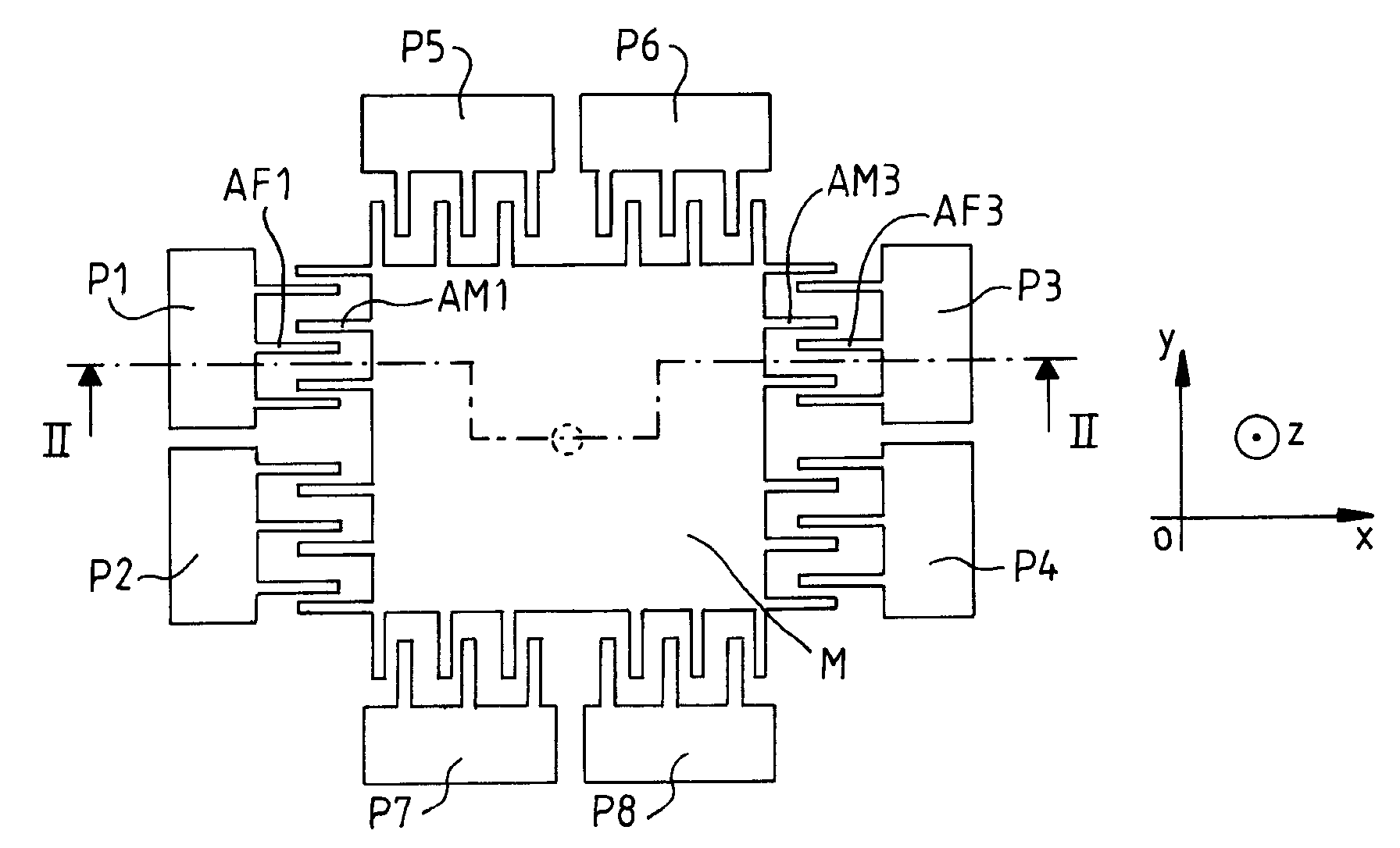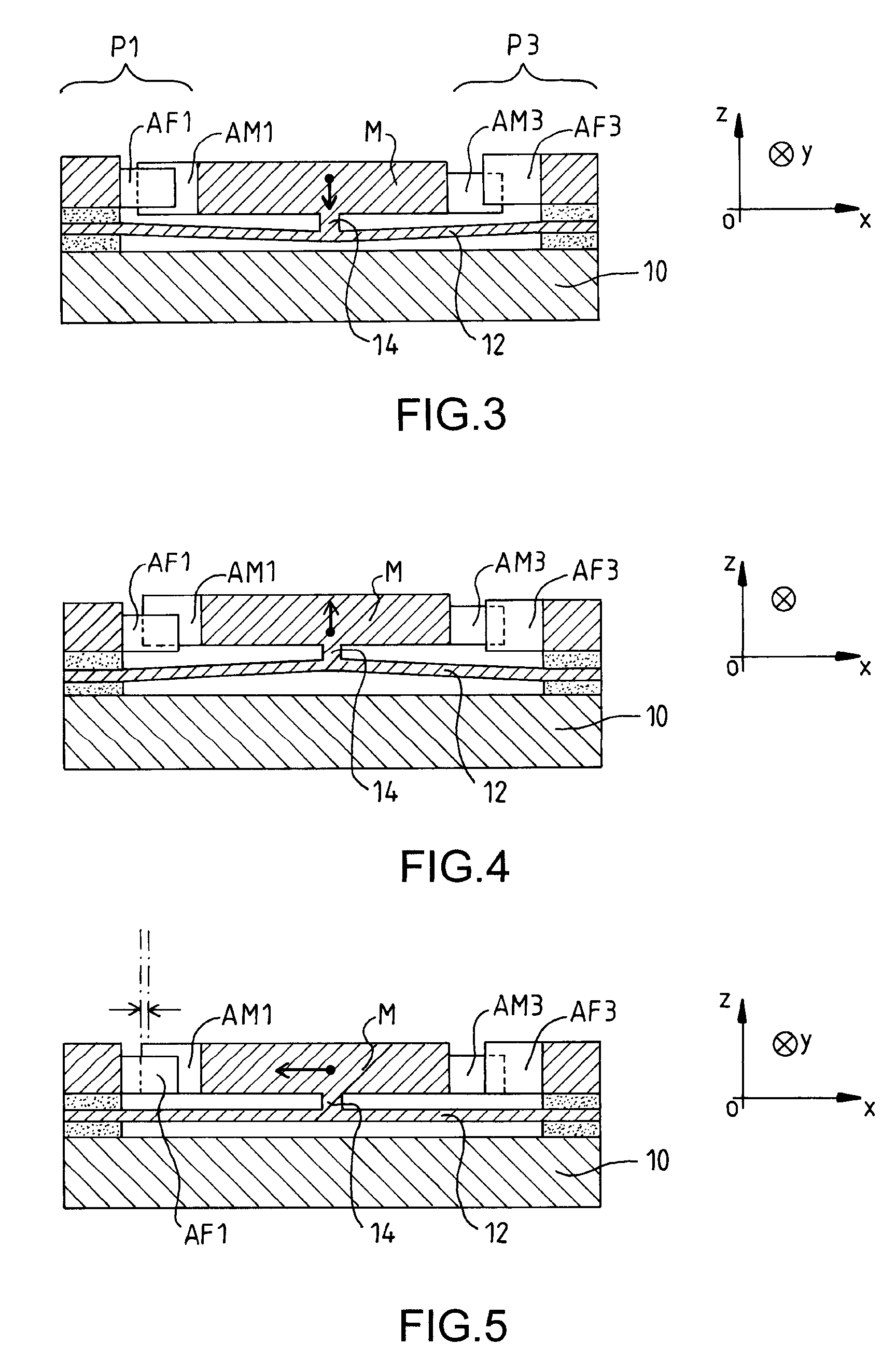Triaxial membrane accelerometer
a triaxial membrane and accelerometer technology, applied in the direction of speed/acceleration/shock measurement, flexible microstructural devices, instruments, etc., can solve the problems of large surface area, cumbersome and expensive solutions, and relatively expensive solutions
- Summary
- Abstract
- Description
- Claims
- Application Information
AI Technical Summary
Benefits of technology
Problems solved by technology
Method used
Image
Examples
Embodiment Construction
[0027]In the view from above of FIG. 1 is seen a movable proof mass M, of for example rectangular or square or indeed even circular shape, provided on each of its sides with interdigitated capacitive combs. Interdigitated combs are conventionally used for the measurement of the displacements of the proof mass in micro-machined accelerometers. They are variable capacitances having movable plates which are comb fingers secured to the proof mass and fixed plates which are comb fingers secured to fixed portions of a substrate of the accelerometer. There is at least one interdigitated comb on each side, but preferably two combs per side. If the accelerometer is of slaved type there may be additional combs having an electrostatic motor function, but this is not compulsory, the same combs being able to serve for measurement and for slaving.
[0028]The capacitance of each comb at rest is defined by the number of plates in parallel, by the surface area of the individual plates opposite one ano...
PUM
 Login to View More
Login to View More Abstract
Description
Claims
Application Information
 Login to View More
Login to View More - R&D
- Intellectual Property
- Life Sciences
- Materials
- Tech Scout
- Unparalleled Data Quality
- Higher Quality Content
- 60% Fewer Hallucinations
Browse by: Latest US Patents, China's latest patents, Technical Efficacy Thesaurus, Application Domain, Technology Topic, Popular Technical Reports.
© 2025 PatSnap. All rights reserved.Legal|Privacy policy|Modern Slavery Act Transparency Statement|Sitemap|About US| Contact US: help@patsnap.com



